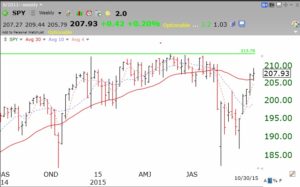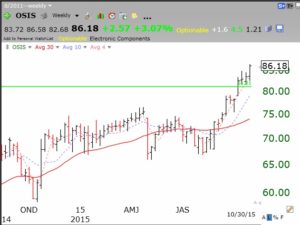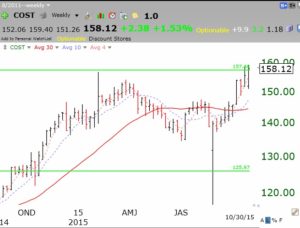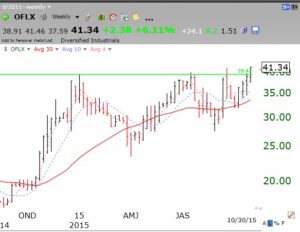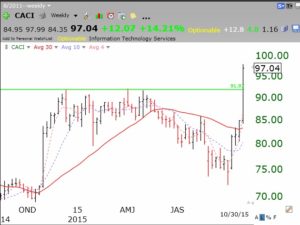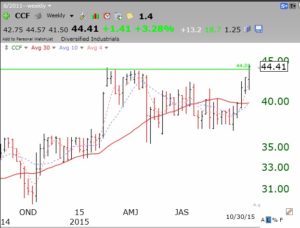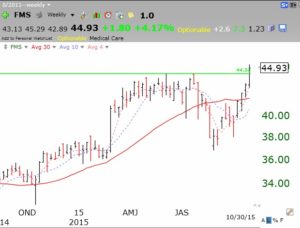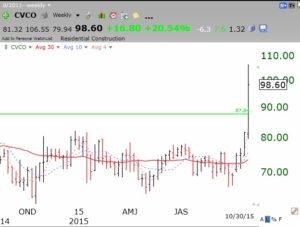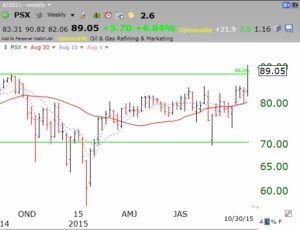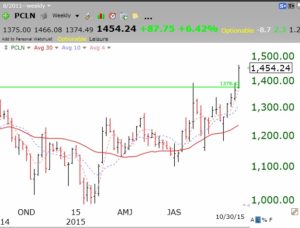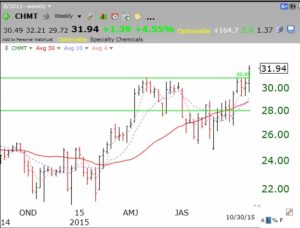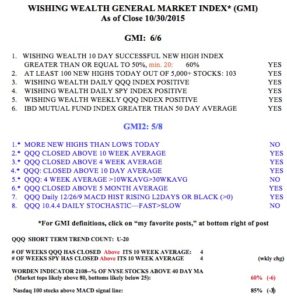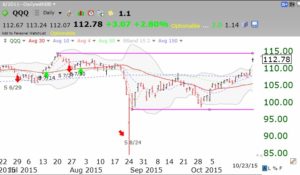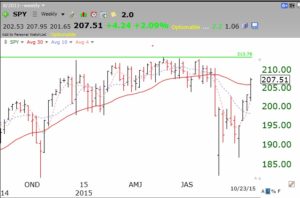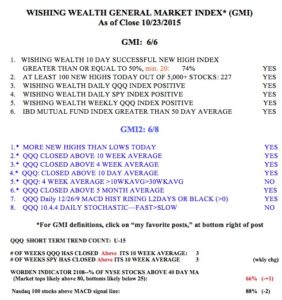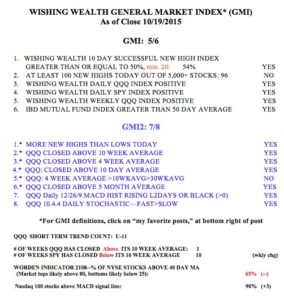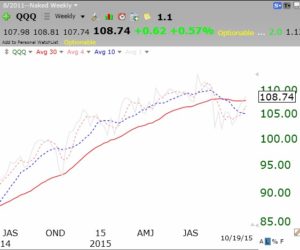The SPY is fighting its way back from the summer swoon. It has taken 9 weeks to retrace the decline that occurred in 2 weeks in August. (Stocks always decline faster than they rise.) However, note the overhead resistance coming up and the fact that the 10 week average (blue doted line) is still far below the 30 week average (red line). I will not reinvest my most conservative university pension until the 10 week average regains its leading position above the 30 week average. The 10 week was above the 30 week for most of the period since 2012. If this rebound fails, it could trigger a significant decline.
Below are weekly charts of 11 stocks that had green line break-outs (GLB) last week. If I bought any of them (after doing diligent research) I would always sell it immediately if the stock closed back below the green line. The green line represents an all-time high that was not exceeded for at least 3 months. It designates a technically strong stock that has consolidated and formed a base at a high level. To me (and the great trader Nicolas Darvas) a stock’s hitting an all-time high is a requirement for a purchase. Note that two well known companies, COST and PCLN, are GLBs! I own none of these…..(click on charts to enlarge)
The GMI remains on a Buy at 6 (of 6).
